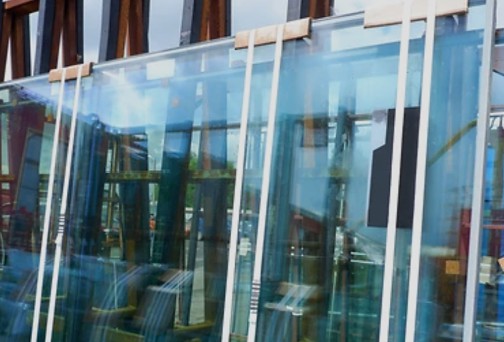Why Advanced Materials Is Paving the Way for Low-Carbon Building Solutions?

Strong 8k brings an ultra-HD IPTV experience to your living room and your pocket.
In recent years, the conversation around sustainable living has intensified, encouraging industries to innovate and reshape their products and processes. One of the most promising advancements in this realm is the development of advanced materials aimed at creating cleaner environments and paving the way for low-carbon building solutions. These cutting-edge materials are not only essential for reducing environmental impact but also crucial for building more efficient and resilient structures.
The Rise of Advanced Materials
Advanced materials are the byproducts of innovative research and technology, designed to offer superior performance compared to conventional materials. They are engineered to have unique properties that allow them to contribute significantly to the reduction of carbon footprints in various industries, particularly in construction. By focusing on sustainability, these materials aim to create safer, cleaner, and more energy-efficient environments.
What Makes a Material "Advanced"?
1. Enhanced Durability and Strength: Advanced materials are often developed to possess superior mechanical properties that extend the lifespan of structures while minimizing maintenance demands.
2. Recyclability and Biodegradability: A hallmark of many advanced materials is their ability to be recycled or biodegrade over time, thus contributing to a circular economy.
3. Energy Efficiency: Some materials are designed to improve a building's insulation, thus reducing energy consumption for heating or cooling.
4. Lightweight and Flexible: New materials are often lighter, which reduces transportation emissions and allows for innovative architectural designs.
Advanced Materials for Cleaner Environments in Action
Let's explore some groundbreaking advanced materials that are making strides in the construction industry:
1. Graphene
Touted as a "wonder material", graphene is a single layer of carbon atoms known for its incredible strength and conductivity. Its potential in construction includes enhancing concrete to make it both lighter and stronger, thus reducing the amount of material needed. This directly contributes to lower carbon emissions associated with material production and transportation.
2. Aerogel
Known as "frozen smoke," aerogel is a lightweight material with excellent thermal insulation properties. Its use in insulation reduces the amount of energy needed for heating and cooling buildings, directly impacting energy efficiency and contributing to a reduction in carbon emissions.
3. Phase Change Materials (PCMs)
PCMs can absorb, store, and release heat during the process of melting and solidifying. By integrating PCMs into building materials, structures can naturally regulate temperatures, diminishing the need for artificial climate control and reducing energy consumption.
Low-Carbon Building Solutions
The application of advanced materials extends into developing innovative low-carbon building solutions, a critical component in combating climate change. Here's how industries are implementing these technologies:
Sustainable Infrastructure
The construction sector is responsible for a significant portion of global carbon emissions. By utilizing advanced materials with lower embodied energy—energy consumed during extraction, processing, and manufacture—builders can significantly cut down their carbon footprint. For example, incorporating supplementary cementitious materials like fly ash or slag in concrete reduces reliance on traditional, carbon-intensive cement.
Net-Zero Energy Buildings
The integration of advanced technologies enables the creation of Net-Zero Energy Buildings (NZEBs). These structures combine energy-efficient designs with on-site renewable energy generation, allowing them to produce as much energy as they consume over a year. Energy-efficient materials, such as high-performance glazing and thermal mass components, play a critical role in achieving this balance.
3D Printing in Construction
3D printing is revolutionizing how we approach construction. By using advanced materials that can be printed into durable structures, this technology reduces waste and promotes precision in building. The ability to produce complex, optimized shapes can lead to significant material savings, lowering the environmental impact of construction sites.
The Future of Sustainable Construction
As awareness grows about the importance of reducing environmental impact, the construction industry is continuously exploring new materials and techniques. Advanced materials not only make buildings more sustainable but also offer economic benefits, as more efficient buildings typically have lower operating costs.
In conclusion, advanced materials for cleaner environments and low-carbon building solutions are no longer a distant dream but a present reality. By embracing these innovations, we are taking significant strides toward a sustainable future, where our built environment coexists harmoniously with the natural world. Collaborative efforts among researchers, engineers, and environmentalists are essential to advance these technologies and make them accessible to all, ensuring a healthier planet for generations to come.
Note: IndiBlogHub features both user-submitted and editorial content. We do not verify third-party contributions. Read our Disclaimer and Privacy Policyfor details.







